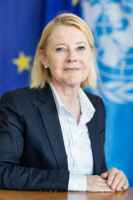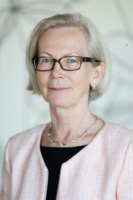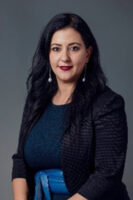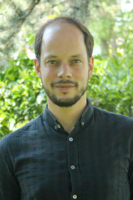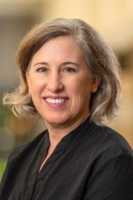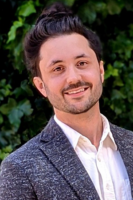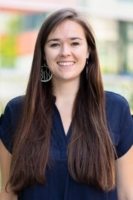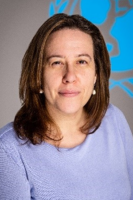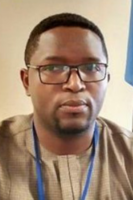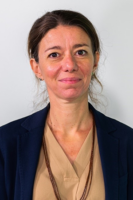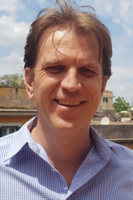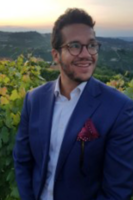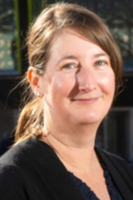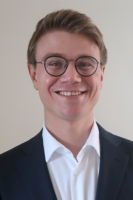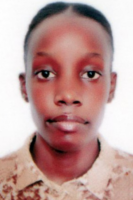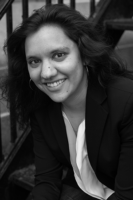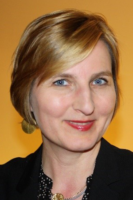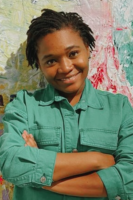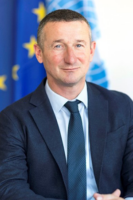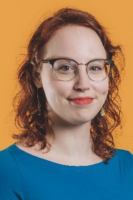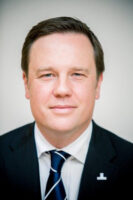As a Hubert H. Humphrey Fellowship alumnus, the words ‘we are more alike than unalike’ ring true and have defined my worldview for a while now. Being part of the Cross-border Dialogue and for Peace and Youth Empowerment Programme has not only further qualified these words but also slowly turned these profound words into a personal mantra. One common aspect of both programmes is the opportunity to connect with ‘others’ socially and meaningfully. Fifteen months down the road, the role of social connections in breaking barriers is clearer to me now more than ever before.
History tells us human beings have hunted, travelled and lived in social groups, a fact that points to human beings being inherently social creatures. These social groups allow for social interactions, support, and cooperation to reach goals and thrive. However, these groups require relational links for them to function. Connection is a basic human need that enables humans flourish despite their differences. It also provides benefits such as good mental health, higher self-esteem, greater empathy, more trusting and cooperative relationships, a sense of identity and belonging (when we feel accepted and valued) – in many ways protecting us. It is in social groups that we learn skills and gather knowledge that helps us prosper in our environments, many of which are complex.
Today, I sit in Bukavu, among friends from Burundi, the Democratic Republic of Congo (DRC), Rwanda and Uganda - people I have grown particularly fond of. At the beginning of 2022, I could only imagine what implementing a cross-border project in the Great Lakes region would bring.
The Cross-border Dialogue for Peace and Youth Empowerment in the Great Lakes region is a five-year initiative implemented by Interpeace and its partners Pole Institute, Never Again Rwanda (NAR), the Centre of Alert and Prevention of Conflicts (CENAP), Action for Peace and Concord (APC), Refugee Law Project (RLP), and Vision jeunesse Nouvelle (VJN). With funding from the European Union and the Swiss Development Cooperation, the programme merges two projects, namely “Youth Innovation Lab for Peace” also known as the ‘YouthLab’ and “Cross-border Dialogue for Peace in the Great Lakes region, phase III.” The programme is implemented under three main pillars: Capacity-building, Dialogue and Advocacy. It targets youth below the age of 30, with a total of 30 Young Innovators and 120 Peace Fellows currently engaged in the two projects. The participating youth were selected from various nationalities and backgrounds, including refugees working on diverse various socio-economic issues.
Bringing together young entrepreneurs, community activists, students, professional artists, tech and communications personnel, doctors, nurses, lawyers and development workers at different stages of their careers and lives has been no smooth ride. Some of these youth are formally employed, others heading their initiatives while some are at different levels of education. However, they are all joined together by a desire to bring about peace in their communities and the region.
These youth have had the opportunity to interact with duty bearers in their countries and beyond. For example, they have engaged with the Deputy Governor of Bukavu and the Governor of Rubavu, both youth-friendly and optimisic leaders who shared positive personal accounts of their lives in the various countries within the region. Engaging with fellow youth, both in their own countries and beyond, has presented new opportunities for many of them. Their first journeys to districts and sub-regions within their countries, the process of obtaining and owning travel documents, engaging with immigration officers prior to and as they cross borders, and facilitating sessions while engaging in the various project activities have been some of the life changing aspects according to some of the youth.
During the project activities in Uganda, Burundi, Rwanda, and now the DRC the youth have been challenged to get to know one another, interrogate and understand each other's points of view. Alongside this, youth have continued to support and challenge one another and create friendships across divides. I have witnessed youth who initially met as strangers in country and regional events open up, interact and get to know each other. In the process, making connections, expanding their networks, and rethinking biases and notions they had about ‘others’ and their experiences. These steps and actions critical in building peace.
For me, peacebuilding at its most basic is about understanding the interconnectedness of the world - understanding that the pain of another individual, community or country impacts us directly or indirectly. Therefore it is our responsibility to ensure such pain is prevented and at most, effectively addressed.
Getting to know a person as an individual enables us gain better insight and a comprehension of the person, their way of life, culture, the challenges they face and generally who they are. This allows us to identify similarities often securing an understanding of the interconnectedness of the world. Initially, many of the young people on the project initially stuck to smaller groups informed by the similarities they were aware of – places of residence, nationality, language, and even gender in some instances.
As we have continued to meet during in-country and regional activities, many of these initial groups have since dissolved, giving rise to interactive individuals many of who are increasingly mindful of each other. Achieving this kind of mindfulness requires connections that enable us understand and develop compassion and empathy for people we perceive as different. This is an essential component in empowering us to resist ‘othering’ – a notion primarily responsible for aggression and abuse of those different from us.
The social connections being developed between and among the youth from the four participating countries has the potential to better the well-being for both participating youth and those in their circles of influence as a collective, an ingredient with ability to solve some of our greatest challenges such as conflict.
Beyond the visible relational social connections, is the connectedness to the physical places and lands we belong to, identify with, or have visited-places where we have been welcomed and felt at home. The project has facilitated regional visits and engagements in different locations. In Uganda, participants have travelled to and engaged in Kampala, Arua, Entebbe and Kasese. Beyond Uganda interactions have taken place in Gisenyi, Bujumbura and Bukavu, further strengtheningconnections to these places allowing them to further cultivate meaningful relationships in their lives beyond the confines of their own countries and regions.
Sitting in Hotel Elizabeth in Bukavu, watching youth and other project personnel interact – tight hugs, joyous laughter, broad smiles and enthusiastic head-nods acknowledging each other; I see a shift in sitting arrangements oblivious to nationality and language challenges, I hear individual attempts to communicate and support each other in French, Kiswahili and English. In these moments, I am reminded of the words of Melvin McLeod, “…we are so interdependent, so closely interconnected with each other, that without…a feeling of brotherhood and sisterhood…we cannot hope to overcome the dangers to our very existence—let alone bring about peace and happiness.”
As the second session of the Face-to-Face training for Young Innovators ends, I am encouraged by the fact that a generation is being molded by the Cross-border programme, a generation that is reaching out and fostering connections, meaningful relationships, and authentic engagement both in person and online. They are building bridges that transcend gender, status, ethnicities, nationalities and other social markers. This generation is being empowered with skills, learning and unlearning side by side, united in their differences and diversity with the aim to build and realize sustainable peace.
As the world concludes commemorates the International Day of Living Together in Peace, a day that aims to uphold the desire to live and act together, united in our differences and diversity to build a sustainable world of peace, solidarity and harmony, one key lesson the Cross-border programme teaches us is that social connections are a vital component on the path to peace. In the words of Maya Angelou, we are indeed more alike that we are unalike!
Story by:
Solomy Awiidi
Programme Manager- Conflict, Transitional Justice and Governance (CTJG)
Refugee Law Project
School of Law
Makerere University
